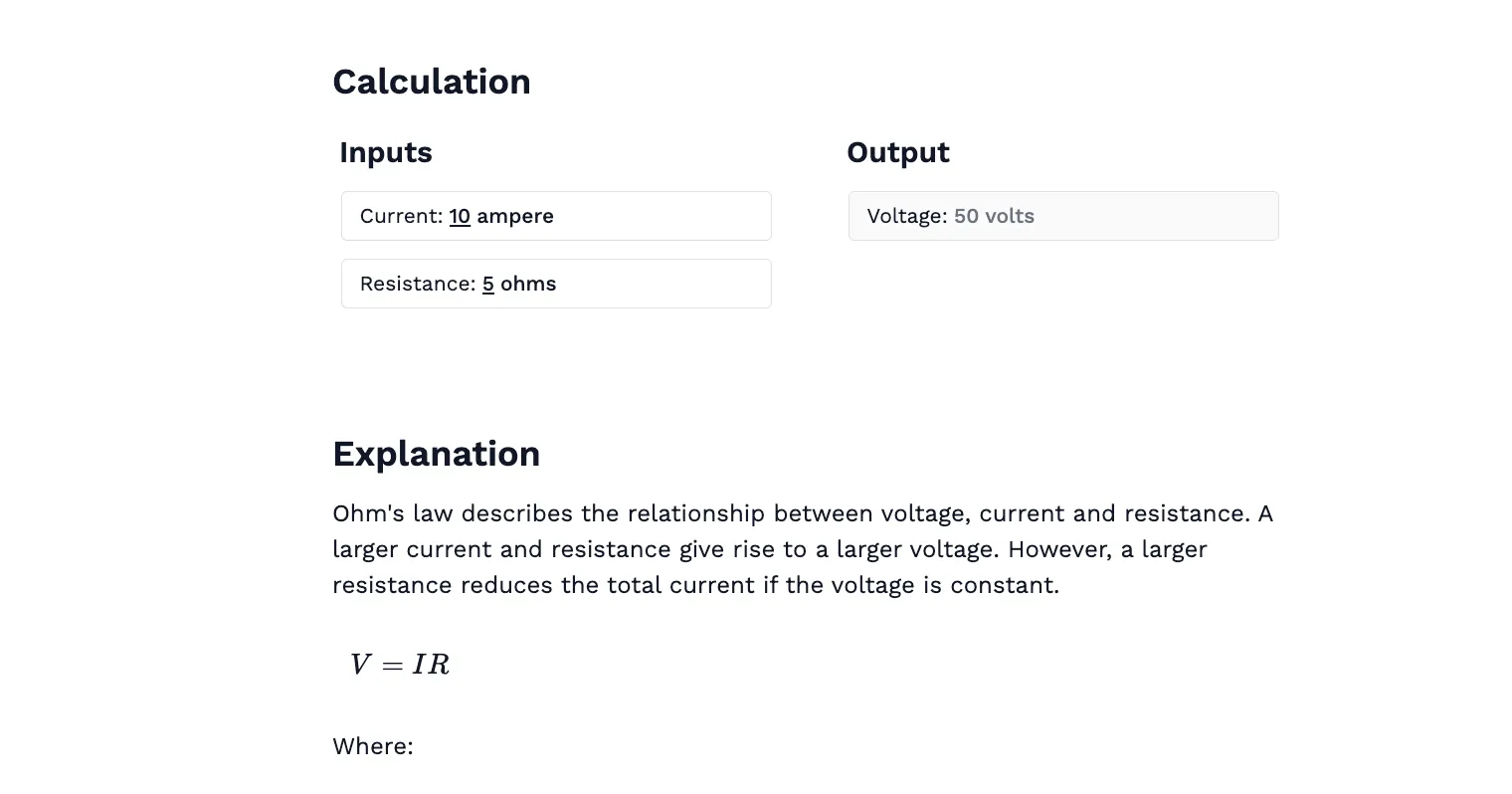Free Ohm's Law Calculator: Voltage In a Circuit. Step-by-step, engineering-grade tool with downloadable report.

This template is not available yet. You can sign up and create it yourself!
Or let us know if you'd like to be notified when it’s ready:
About this calculator
The Ohm's Law: Voltage In a Circuit Calculator is designed to calculate the voltage in a circuit using Ohm’s Law, given the electric current and resistance. This tool provides a simple and efficient way to determine the voltage needed to maintain the desired current flow in a circuit, making it an essential resource for electrical troubleshooting and design.
This calculator is for:
- Electrical engineers analyzing circuit performance and ensuring voltage levels meet design specifications.
- Technicians troubleshooting electrical issues by calculating the voltage across different components in a circuit.
- Students learning the fundamentals of Ohm’s Law and how voltage, current, and resistance are related.
The calculator offers quick feasibility checks to ensure the voltage in a circuit is correctly calculated based on known current and resistance. Manual methods involve applying Ohm’s Law through individual calculations, which can be time-consuming and error-prone. This tool automates the process for fast, accurate results.
For further reading on electrical circuit analysis and Ohm’s Law, "Basic Electrical Engineering" by V.K. Mehta is an excellent textbook that covers the principles of voltage, current, and resistance in various electrical applications.
Engineering templates
Common calculators
Design guides
FAQs
What is Ohm’s Law, and why is it important in circuit design?
Ohm’s Law describes the relationship between voltage, current, and resistance in a circuit. It’s fundamental for understanding how electrical systems function and for designing circuits that meet specific requirements.
How does resistance affect voltage in a circuit?
Higher resistance in a circuit requires a higher voltage to maintain the same current. This makes resistance a key factor in determining how much voltage is needed for proper operation.
Why is it important to calculate voltage in a circuit?
Calculating voltage ensures that all components in the circuit receive the correct amount of electrical power without exceeding their limits, preventing damage and ensuring efficient operation.
Learn about the benefits of using CalcTree on engineering projects!


